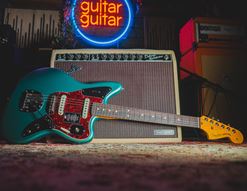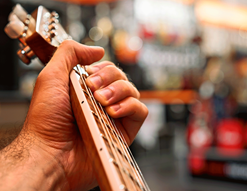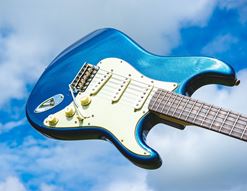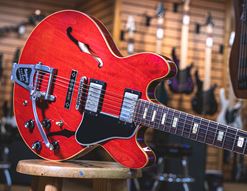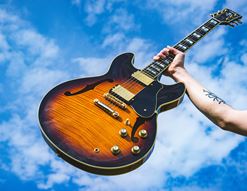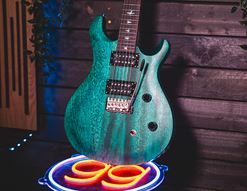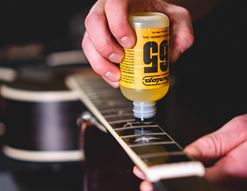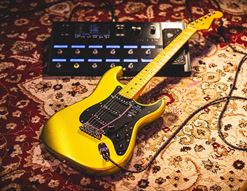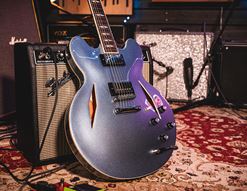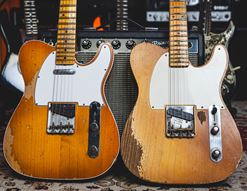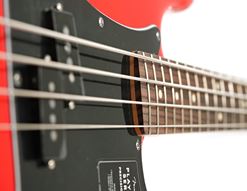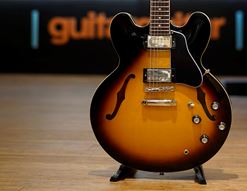What do you look for in an acoustic guitar?
Choosing an acoustic guitar is totally different to choosing an electric guitar, isn’t it? We tend to chop and change with electric guitars, buying a number of them for their features, styles and even colours. But when it comes to acoustic guitars, we tend to be more selective. Generally, we buy them less often and we play them more often.
It’s strange, isn’t it?
When it comes to acoustics, I feel like we are somewhat more practical than we are when choosing electrics. We look at the body size, we assess how loud they are, and so on. We want them as companions to our musical lifestyle, so they need to fit into that in ways that electric guitars maybe don’t have to do so much.
This was the headspace I occupied as I took a critical look at Epiphone’s newest high-end acoustic guitars.
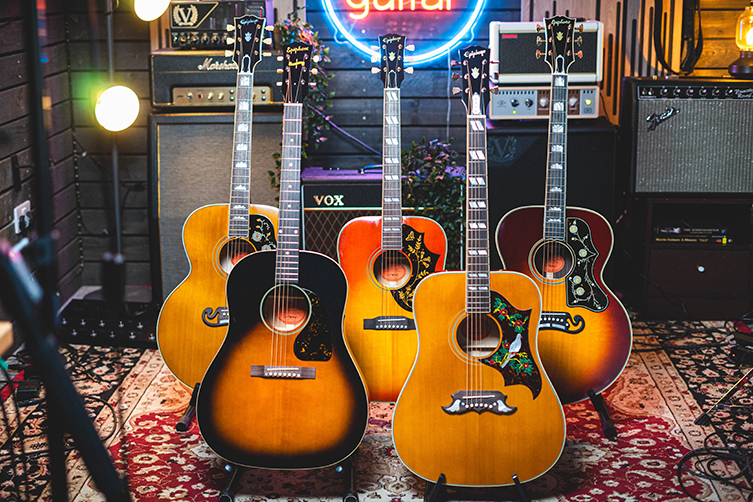
Contents
Epiphone Inspired by Gibson Custom
Which Guitars Are in the Range?
What does ‘Thermally Aged’ Mean?
Epiphone Inspired by Gibson Custom
This new collection of guitars is the Epiphone Inspired by Gibson Custom range. This is a collaborative series of instruments designed by Epiphone with help from Gibson’s Custom Shop. They are modelled after well-loved GIbson acoustic classics, and are designed to be real contenders for guitar aficionados.
These are a more high-end collection of guitars than the standard Epiphone acoustic range, with build features and details that bring them quite some distance away from the brand’s reputed ‘affordable’ connotations. You’ll find out soon, but these are pretty serious guitars!
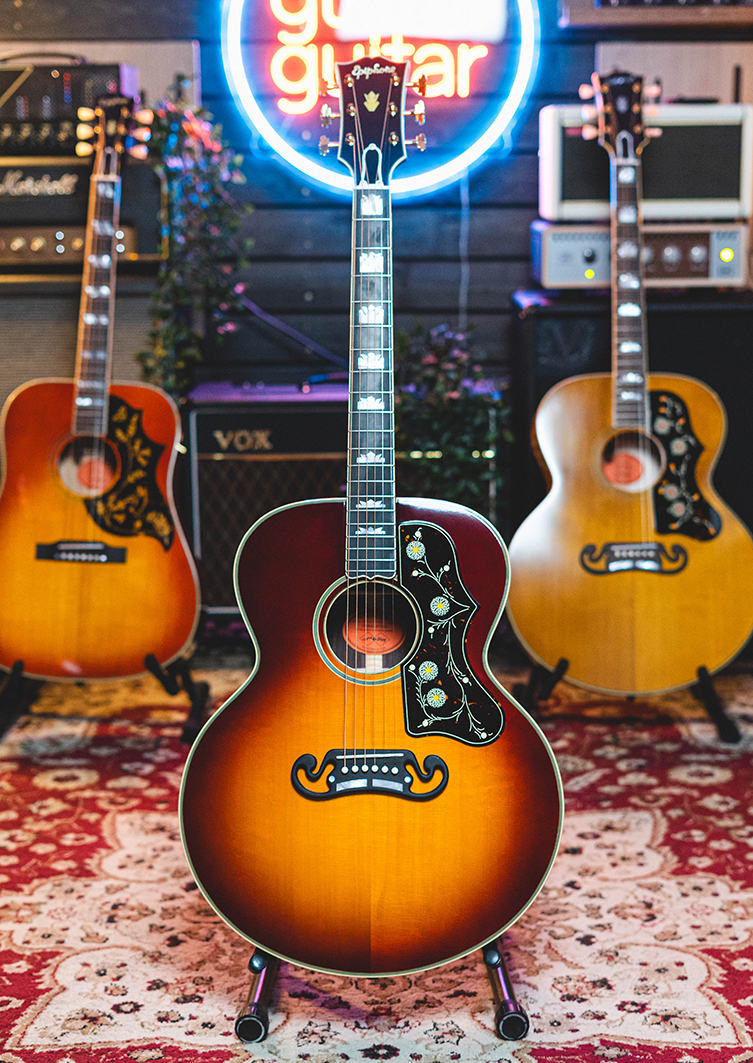
The idea with a range like this is to offer excellent, top-range features and quality at a price point that is more attainable for a wide range of players. We all love the Gibson Hummingbird, for example, but we can’t all afford one. A range like this - built in China to exceptionally high standards - brings the aesthetic and magic of a classic Gibson acoustic guitar into the hands of players who can’t stretch to Gibson USA prices but still want a quality guitar in that style.
Moreover, these are ‘official’: they are not copies. They are replicas, designed in tandem with the original brand. That’s something that carries a lot of weight in this world, and you can tell from the first strum that these have the Gibson pedigree in them.
Below are some of the features you can expect to find, regardless of which model you go for…

Shared Features of the Range
As a prestigious new Epiphone Series, these guitars have impressive features. Here are some of the tasty details…
- All-solid wood construction
- Gibson-style ‘open book’ headstock shape
- Thermally-aged (torrefied) tops
- Period-correct decorative appointments
- LR Baggs VTC pickup systems
- Bone nuts, bridge saddles and pins
Aside from this, the guitars will differ in timber choice, according to their historical counterparts. So, which guitars make up the range? Let’s have a look, shall we?
Which Guitars Are in the Range?
I suspect you’ll probably be able to guess which guitars are included in the Epiphone Inspired By Gibson Custom Range. Gibson are responsible for some of the most famous and recognisable acoustic guitars on the planet, so it makes obvious sense to pick the ones that everybody loves, right?
Here’s a quick list before I check out each in turn:
These are some pretty iconic guitars, to say the least. Now, before I check out the individual models themselves, you’ll have noticed talk of ‘thermally aged’ woods. If you’re not too clear on that term, let me give you a quick explainer before we move on.
What does ‘Thermally Aged’ Mean?
It’s no secret that some of the sounds that guitar fans love the best come from very old acoustics. We’re talking about guitars that are a century or more old, which have seen decades and decades of constant use. These guitars don’t wear out: they season, and become richer and clearer sounding with age. It’s a beautiful thing to experience, and of course everybody wants their guitar to sound like that!
Since none of us can reasonably wait a full century for some freshly chopped timber to age into its best tones, the guitar industry has found a workaround. Torrefaction - also known as roasting, thermally ageing, ‘caramelisation’ (that’ll be you, Charvel) and erroneously as torrefication - is the process used to get to that sound faster.
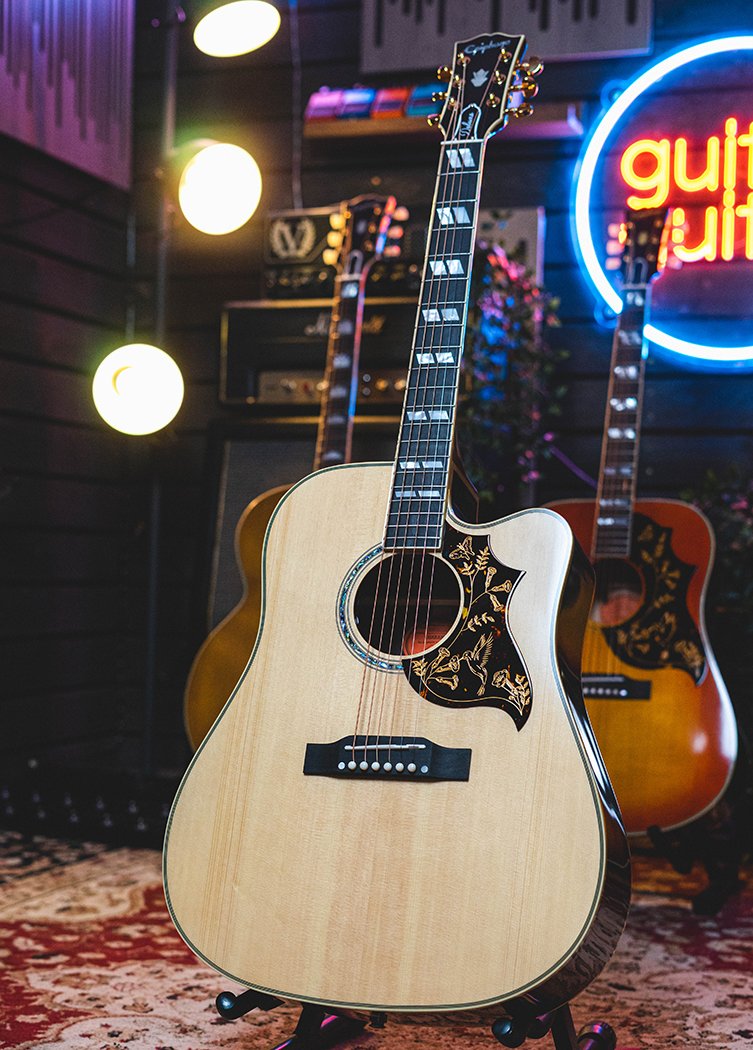
Torrefaction is a process whereby the wood blanks are put in a room with high heat (not flames) and no oxygen. The heat not only dries out all the moisture from the timber, but in fact actually changes its molecular structure. This results in strong, dry wood which delivers that same distinctive ‘pre war’ or ‘antique’ acoustic guitar tone, but in a new guitar. No longer must you wait a lifetime for a cracking sounding acoustic! Yay!
All of the guitars in today’s blog feature torrefied Spruce tops (some are Sitka Spruce, some aren’t), and certain models feature torrefied necks too.
A Deeper Look at the Guitars
So, you know what the range is all about. Let me take a deeper dive at the guitar models themselves…
Epiphone Inspired By Gibson Custom 1942 Banner J-45
This one is going for the real antique vibe, with its retro headstock logo and banner inlay. The thermally aged spruce top is married to a mahogany body here, which is the classic J-45 combination. It’s a sound that can fit into every musical surrounding, and the expected warmth of tone is countered with a lovely crystalline top end, thanks to that roasted top.
This 1942 Banner J-45 has a v-shaped neck profile, too, so it’s an authentic playing experience as well as an authentic sonic experience.
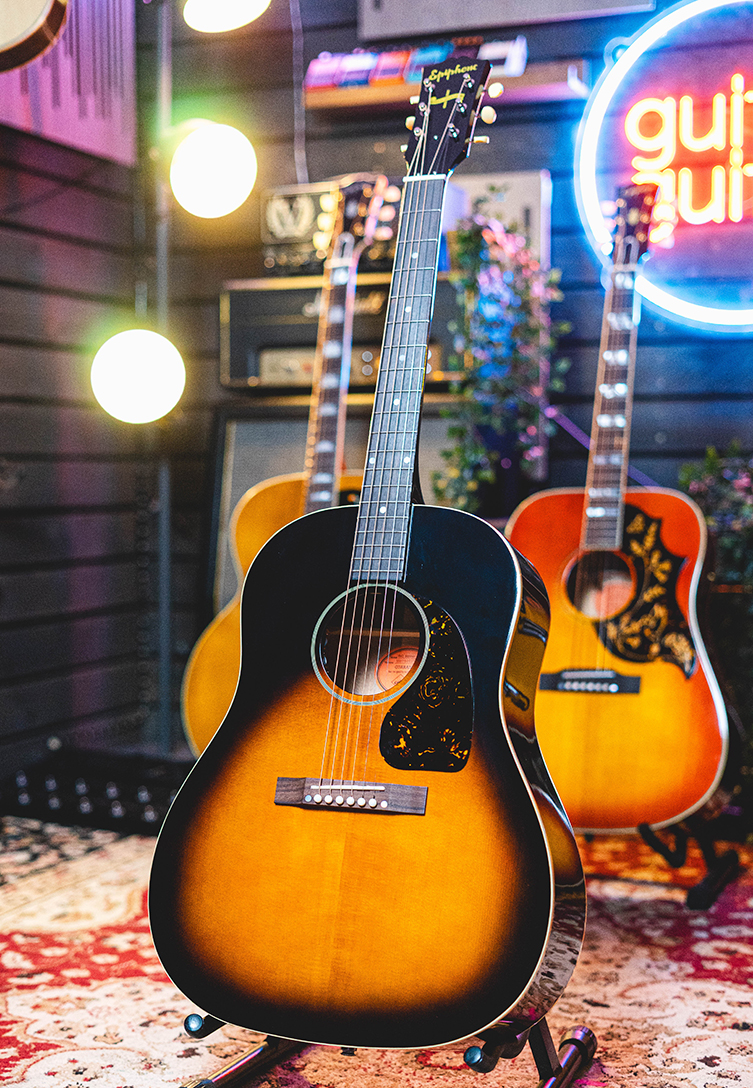
Epiphone Inspired By Gibson Custom 1957 SJ-200
Everyone’s favourite ‘Super Jumbo’ is of course represented here, and in fact it has two guises within this range. This first one - the 1957 SJ-200 reissue - is what I suppose we’d consider the definitive SJ-200 iteration: maple and spruce. I’ll expand on that and tell you that it’s figured maple for the body and thermally aged spruce for the top, resulting in a tone that’s simply huge. If you want a lively, energetic instrument then this is the one to go for!
You get scalloped X-bracing, a rosewood fingerboard and all of the visual trimmings that make the SJ-200 such a charismatic instrument. Singers: this is your next guitar.
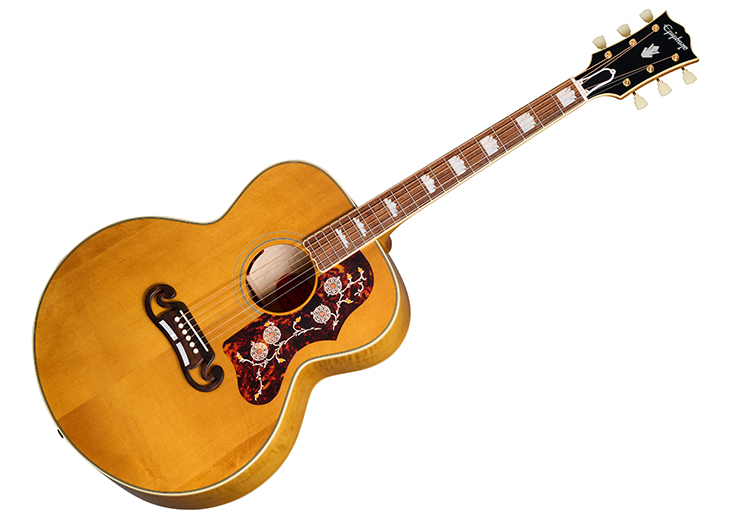
Epiphone Inspired By Gibson Custom Pre War SJ-200
It’s interesting that Epiphone have opted for two versions of the SJ-200. If the 1957 reissue (see above) is the most often-referenced version of this guitar, then this one is equally effective, and maybe even more useful!
I say that, because this model uses rosewood for the body instead of figured maple. Maple sounds tough, clear, loud and bright, which are all terms I’d already use to describe the SJ-200! Using rosewood here - as they did in the 1930s - keeps plenty of sparkle but also focuses and tightens the low end. For me, this makes the guitar a more balanced and controllable ‘cannon’ or a guitar.
I also love the retro logo and ebony fingerboard, and just check out those ritzy Grover Imperial tuners! If you’re one for details, put this Pre War SJ-200 at the top of your list!
Actually, you’ll prefer one over the other, so try both!
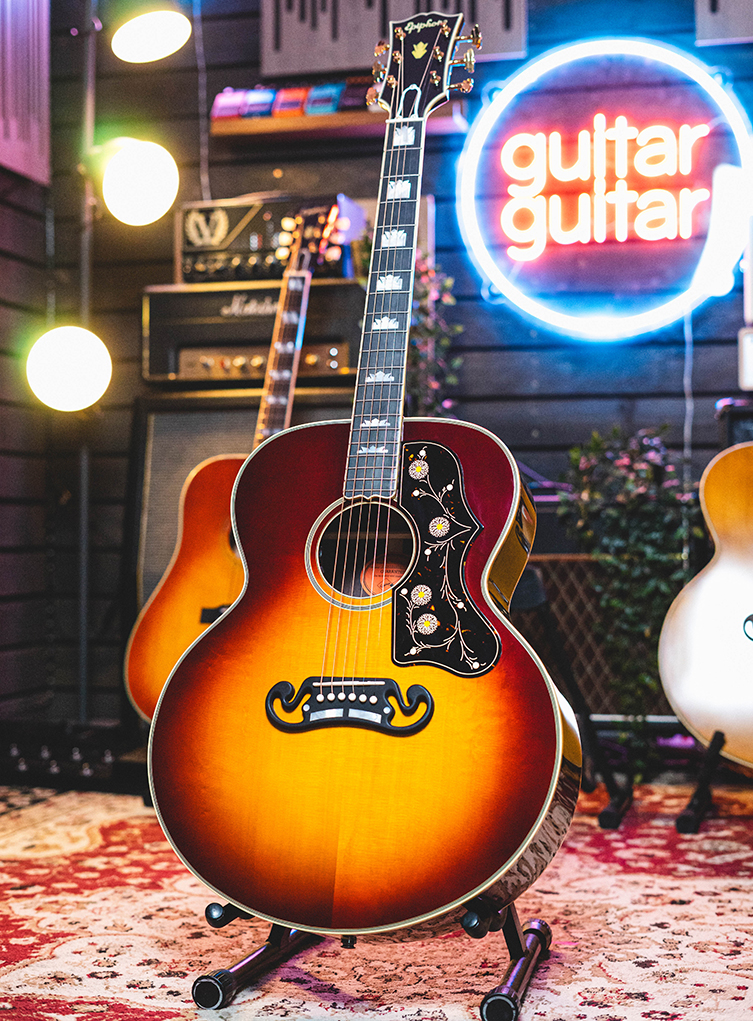
Epiphone Inspired By Gibson Custom 1960 Hummingbird
It’s the classic Hummingbird. 1960 was the model’s first year of issue, and all of the ingredients that made it so immediately correct are here in this fine Epiphone 1960 Hummingbird Reissue. Mahogany for the body, of course, and that omnipresent torrefied spruce is here - as it is on all of these models - to lend that clear, strident authority to the sound.
Interestingly, the one-piece mahogany neck is also thermally aged, so you’ll feel the string vibrations thrumming through your left hand as you belt out another song. It’s a glorious, alive feeling and adds considerably to the guitar’s resonance.
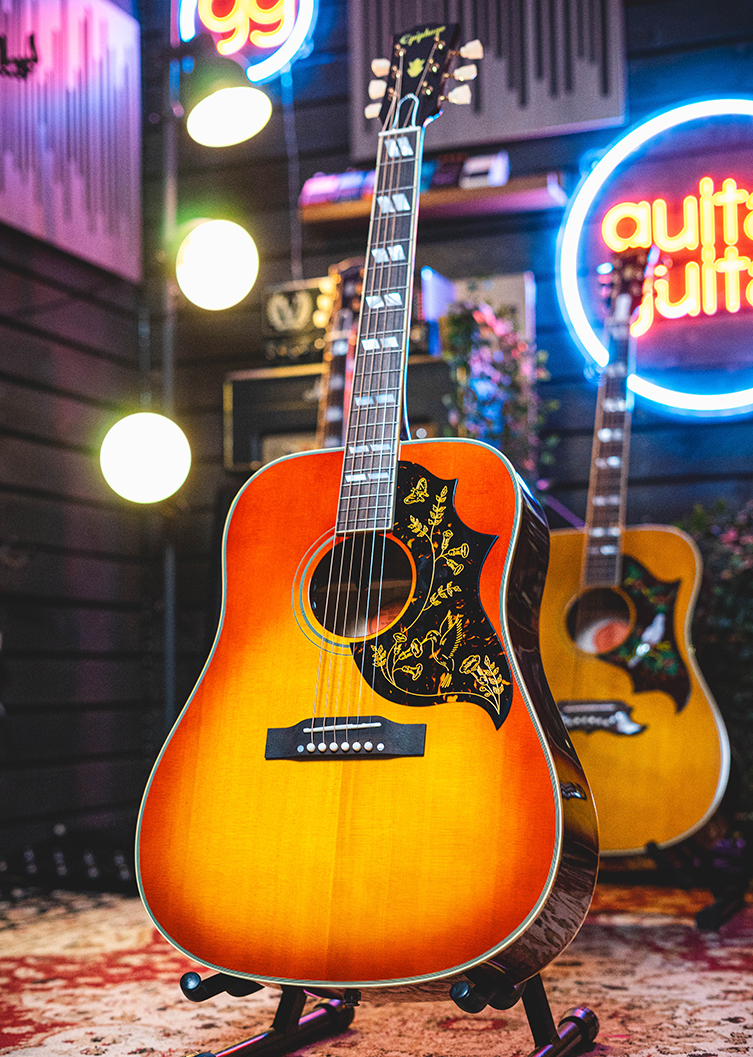
Epiphone Inspired By Gibson Custom Hummingbird Deluxe EC
This model maybe isn’t as specific to a golden era year or anything, but is perhaps more a modernised version of the 1960 Hummingbird model we just looked at. The woods are the same - thermally aged spruce, mahogany, thermally aged mahogany for the neck, ebony for the fingerboard etc - and the finishing and detailing is the same. Loads of binding, split-parallelgorams, a certain bird on the pickguard…it’s all classic stuff but with a cutaway. That’s really the only nod to modernity apart from the (excellent) LR Baggs pickup which is featured on the whole range anyway. The Hummingbird Deluxe EC is a gorgeous guitar and the perfect all-rounder for any player who wants class and heritage in a reasonably affordable gigging guitar.
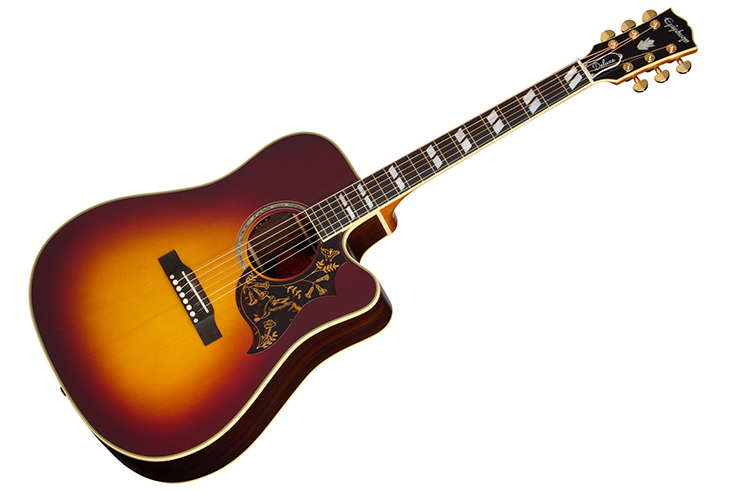
Epiphone Inspired By Gibson Custom 1963 Dove
There’s a Dove model too! The Dove is superficially similar to the Hummingbird of course, but the big difference lies in the body material. Doves are traditionally made with maple bodies and spruce tops, whereas Hummingbirds use mahogany and spruce.
This is the case here too, I’m glad to say. This Epiphone 1963 Dove has that extra chirpy brightness that I had hoped to hear, and also features a thermally aged mahogany neck. Again, you’ll experience a very lively and resonant guitar here thanks to the timber and build quality. You may just find the new 1963 Dove becoming your number one guitar…
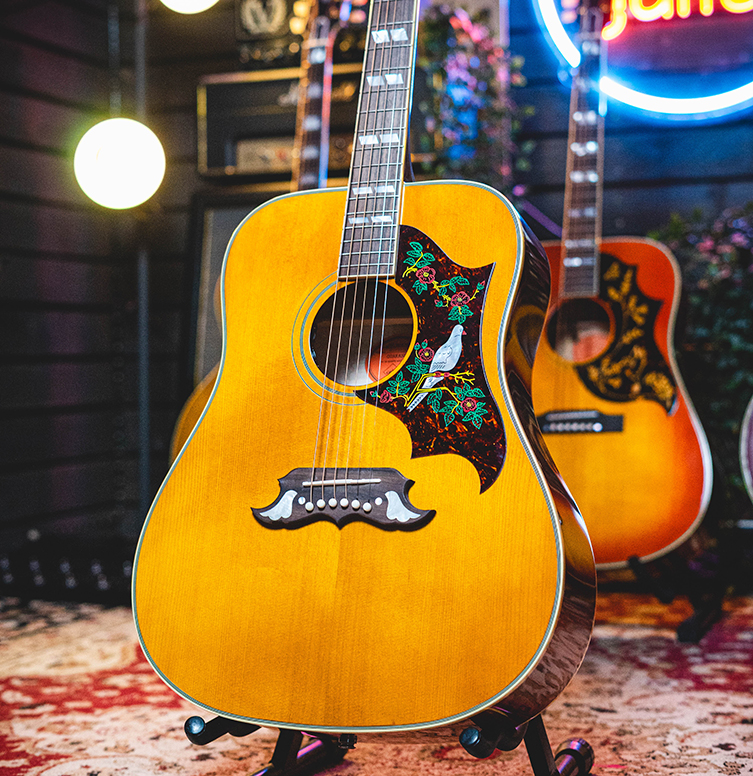
A New Level of Greatness
If you haven’t strummed an Epiphone acoustic in a while, then I think you’ll get a surprise when you try one of these. If you’ve looked at Epiphones as an ‘only if you can’t afford better’ brand, then I’d advise you to think again. The brand have stepped up into the category of ‘genuinely excellent’ with this range, and that’s quite regardless of the price tag.
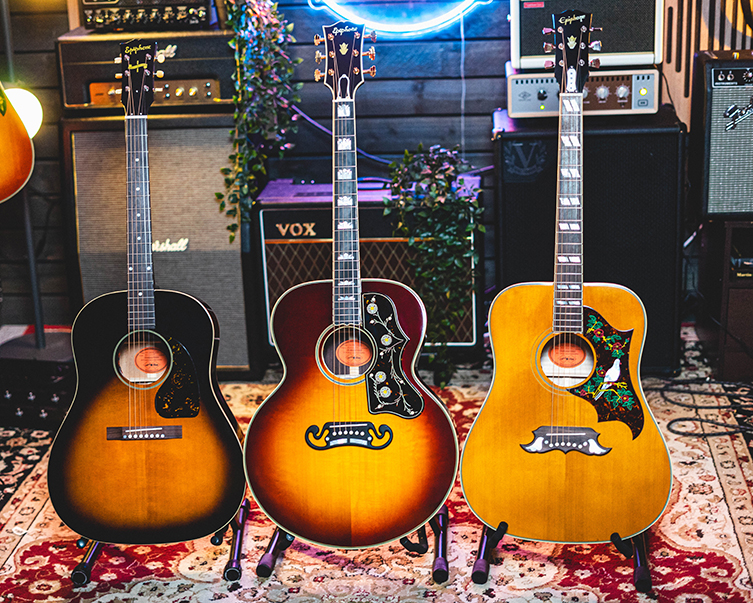
Indeed, these are hardly cheap guitars by anyone’s estimations, and particularly for those with long-held opinions on where Epiphone should sit in the market, price-wise.
Those opinions will remain yours, but I believe there needs to be a great line of acoustic guitars out there for the hard-working guitarist on a budget. Somewhere between ‘fine’ mid-priced acoustics and significantly more expensive USA-made Gibsons. These fit the bill in a number of satisfying ways, to the point where I don’t think you’ll overly lament the lack of the ‘G’ name on the headstock. These deliver those specific signature tones with aplomb, and have the correct details, silhouettes and attached heritage.
Compare them with anything else on the market for the same price. That’s the fair test, as opposed to comparing them with instruments that cost five thousand pounds. Then, I believe, you’ll see just how effective and valuable these Epiphone Inspired by Gibson Custom guitars really are.
Click to View our Epiphone Inspired by GIbson Custom Acoustic Guitars

